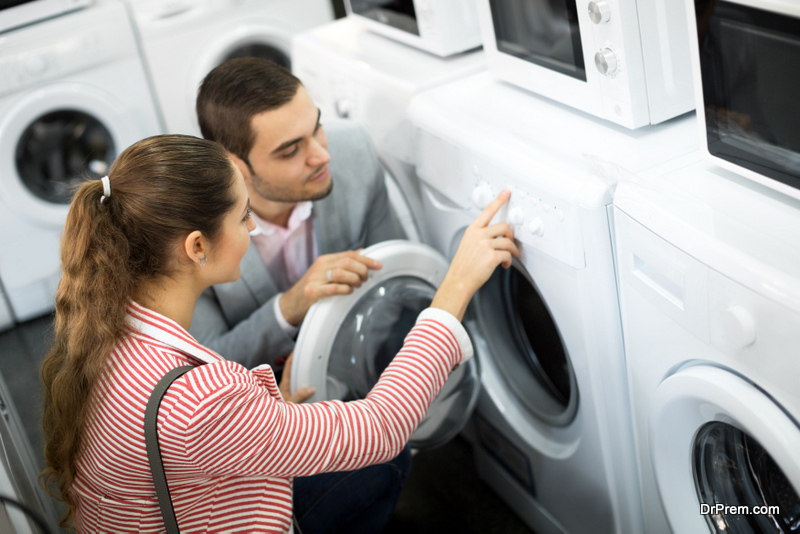Washing machines are a must-have appliance in a modern home. One cannot,however, simply pick any washing machine. To help decide which one to go for, one might take a look at a high-efficiency washer review. These reviews point out the things to consider. For starters, the amount of space available to accommodate the washing machine is very important. Then, another factor is the ease of use of the machine. Nobody wants to spend on a machine they cannot operate.
There are two main categories of washing machines: the front loaders and the top loaders. Many people get torn between the two, which is understandable because each one of the two has its advantages and disadvantages. However, the ideal washing machine must be the most efficient.
Here are a few things to consider when choosing a washing machine:
1. Space
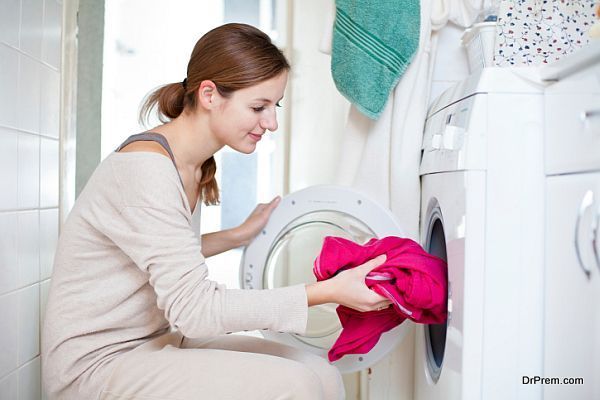 A standard washing machine is between 24 to 30 inches wide. Taking consideration of the space available helps one avoid fitting disasters. For example, the machine might not get inside the house or it could get stuck in the hallways and doorways.
A standard washing machine is between 24 to 30 inches wide. Taking consideration of the space available helps one avoid fitting disasters. For example, the machine might not get inside the house or it could get stuck in the hallways and doorways.
If the space of the house is tight, one might consider going for the front-loading machine. The front-loading machine is more compact than the top-loading one. If one has a very narrow space, choose a front loader because it stacks with the dryer.
In the case where space is not a problem, go for the top-loading washing machine. This type is common for use in the basements or spacious laundry rooms. If the laundry room is communal, the top-loader is also the best option.
2. Energy Efficiency
Using the front-loading washing machine reduces the electricity cost in the long run; front-loaders are more energy efficient. The reason behind their energy efficiency is the absence of an agitator. An agitator is a part of a washing machine that creates motion by rattling and compelling water in the machine to wash the laundry faster. Its absence in front loaders creates more space to put clothes. By increasing the space to put clothes, it decreases the number of wash cycles, thus saving electricity.
On the other hand, top-loaders are not efficient when the load is heavy since the clothes don’t soak thoroughly. Thus, the stains don’t wash away effectively. So, the top-loaders wash clothes in small loads. By increasing the number of loads, the used electricity also increases.
3. Budget
A small budget doesn’t mean sacrificing on performance. Front-loading washing machines are more expensive compared to the top-loading machines. It’s because as technology improves, the front-loading machines upgrade continuously. The top-loaders are cheap, but they use more energy to run. Since more companies are improving the front-loading washers, their cost will be higher than the cost of a top-loader. Nevertheless, front-loading washers are gaining popularity among customers, reflecting the increased investment as worth it.
Such factors, like color and fashion design, influence the purchasing price. For homes in which the laundry room isn’t in the basement, the color of the washing machine is important. Especially if it’s visible to any guests, then the design and color must match the trend of the house.
The difference in repair costs for the two types is not negligible. Front-loading washing machines have many optional washing cycles alongside extra features, which brings the repair and maintenance cost higher than that of top-loading washing machines.
Additionally, the lifespan of a top loader is longer. While the life expectancy of a front loader on average is 11 years, the top loader’s is 14.
4. Water Conservation
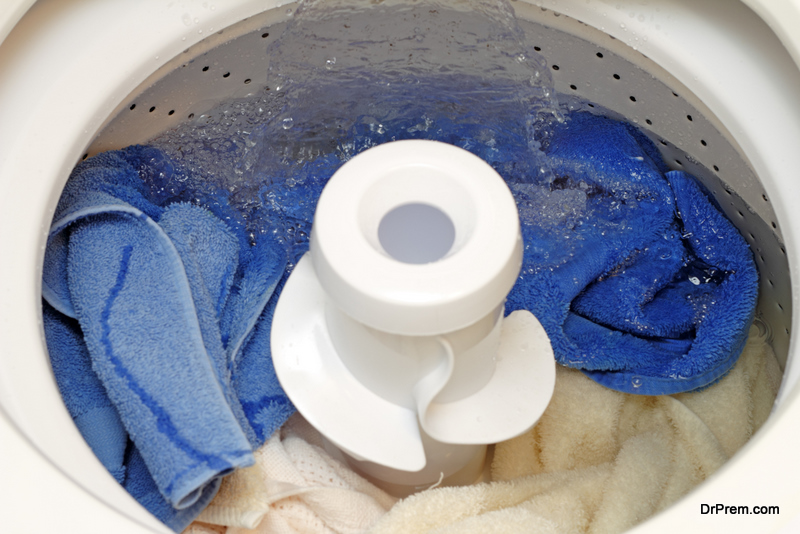 Front-loaders use less water than the top loaders. The top-loading washing machines have to fill up entirely for the wash cycle. The top-loading washing machines use about 100 litres of water per load.
Front-loaders use less water than the top loaders. The top-loading washing machines have to fill up entirely for the wash cycle. The top-loading washing machines use about 100 litres of water per load.
The front-load washer, on the other hand, needs only about 50 litres of water for a load. The front-load washer uses fewer amounts of water while still offering the same performance.
5. Cleaning Results
When it comes to proving the best result per wash, front-loaders come out on top. Front-loaders are gentler on clothes as compared to the top-loaders. Since front-loading machines don’t have agitators, clothes don’t hit each other during washing. Besides, the front-loaders soak the clothes better, removing dirt better than the top loaders while still protecting the clothes from damage.
On the other hand, top-loading washing machines are convenient to use but not the best cleaners. The presence of an agitator means the washer is harsh on clothes, hitting them as they get washed. When it comes to handling heavy loads, the top-loaders are also not the best option. They’re not efficient in washing bulky items, such as pillows, blankets, and duvets. Lastly, the soaking of the clothes is not thorough.
For tough stains removal, go for a washing machine with the steam feature. It’s a temperature setting that mixes in hot and cold water. The setting helps powdered detergent completely dissolve, which is good for better stain removal.
6. Capacity
While the capacity a washing machine can hold depends on the size of the machine, the type of machine can also be a factor. Washing machines with agitators generally have a reduced capacity. The agitators take up some of the space that would have otherwise accommodated a bigger load.
Unlike top-loaders, front loaders don’t have agitators. Thus, they guarantee more space for clothes.
7. Clothing Care
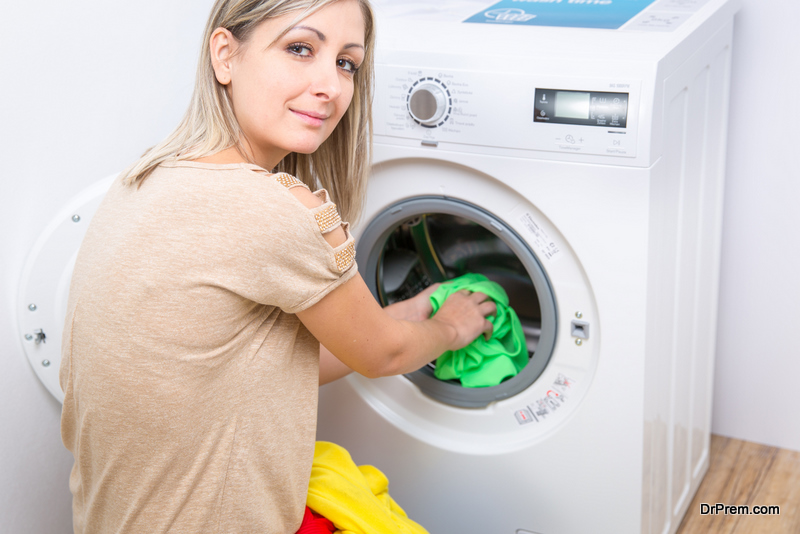 As pointed above, the top-loading washing machines have an agitator. While the agitators help in the stain removal process, the damage on the clothes isn’t negligible.
As pointed above, the top-loading washing machines have an agitator. While the agitators help in the stain removal process, the damage on the clothes isn’t negligible.
To better care for the clothes, opt for a washing machine with adjustable spin speeds. It enables one to have control over the tangling of the fabric. Better still, one might opt for front-loading washers that have no agitators.
Care for clothes includes proper stain removal as well. The steam features in the improved washers ensure the removal of the tough stains. Some washers even go a step further to provide sanitizing cycles that kill germs.
8. Health
The health of the operators, which refers to effective ergonomics, also factors in when choosing a washing machine. The arrangement of the laundry room and the positioning of the washing machines benefit the user by making it easier to operate the machines.
Front-loading washing machines require a knee to bend while loading and off-loading clothes. The top-loading washing machines, on the other hand,should be at a comfortable height. The user can load the clothes without risking injuries when reaching and bending.
Front-loaders can stack with a dryer in an attempt to save space, which, however, makes reaching into them harder. To enable operation from a comfortable height and distance, the ideal washing machine is big. In this case, the top-loaders have reduced injury risk.
9. Children Safety
Accidents happen, and sometimes we can do very little to prevent them. In a household that has children, it’s a possibility that a child can get locked up in a washing machine, given their playful nature. Such an accident is dreadful and possibly fatal.
Front-loading washing machines are easily accessible to children and toddlers when the lid isn’t closed. Hence, it’s advisable to go for a top-loader to prevent such an accident. The top-loading washing machines are children-friendly because they’re hard to reach. Choosing the top-loaders ensures that only older children can help with laundry.
There’s another way to protest the children from injury. When purchasing a washing machine, go for the ones with safety features. Most washers’ design enables them to stop spinning when the lid isn’t closed. This feature prevents injuries in the event anybody accidentally opens the lid. Others have gone the extra mile to provide safety locks, which prevent the lid from opening while the washer is running.
10. Repair and Maintenance
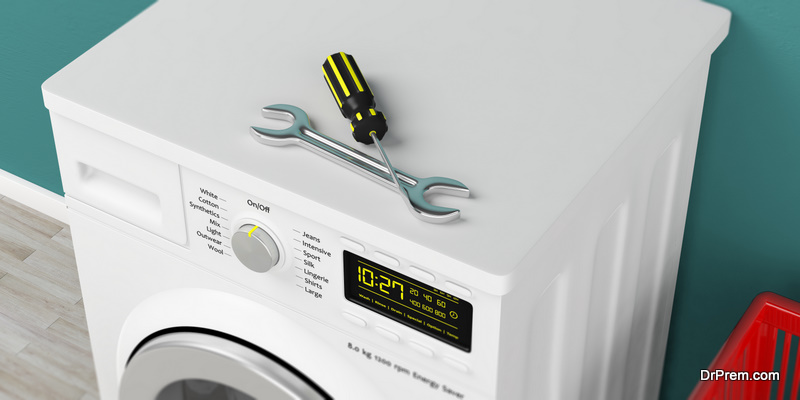 The choice of the washing machine should also factor in the cleaning and maintenance process of the machine. Stacked machines are harder to reach, making it harder to clean. One of the biggest problems with front-loading washing machines is that mould can build-up over time–around the door’s rubber gasket. Thus, front-loading washers need more maintenance than top-loading washers.
The choice of the washing machine should also factor in the cleaning and maintenance process of the machine. Stacked machines are harder to reach, making it harder to clean. One of the biggest problems with front-loading washing machines is that mould can build-up over time–around the door’s rubber gasket. Thus, front-loading washers need more maintenance than top-loading washers.
In terms of repair, only experts are best to handle front-loaders since they have more cycle options alongside extra features. As for the top-loaders, the homeowners can perform simple maintenance procedures since their motors are relatively easy to reach.
11. Wash-Time
Washing machines wash clothes at different speeds. Top-loading washing machines with agitators wash clothes quicker. They also take less time to dry your garments.
However, faster cleaning doesn’t mean better cleaning. The top-loading ones without agitators clean better.
Conclusion
While there are so many factors to consider when choosing a washing machine, the most important one is efficiency. Even though the top-loading washing machines are quicker, the advantages of the front-loaders aren’t ignorable.
The front-loading machines are more efficient. In addition to having a bigger capacity, they save energy and water while cleaning better. If one is on a budget, the top-loading washing machines will serve well enough. Otherwise, the front-loaders have edged the top-loaders, which justifies their high cost.
Article Submitted By Community Writer


